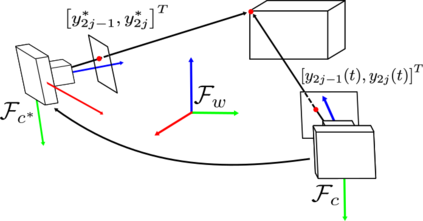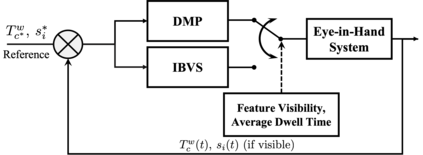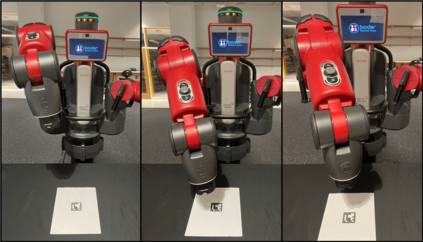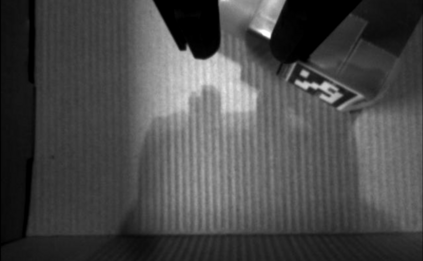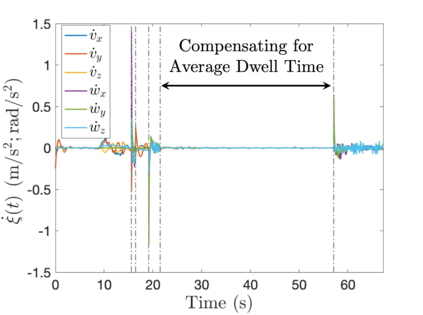Utilizing perception for feedback control in combination with Dynamic Movement Primitive (DMP)-based motion generation for a robot's end-effector control is a useful solution for many robotic manufacturing tasks. For instance, while performing an insertion task when the hole or the recipient part is not visible in the eye-in-hand camera, a learning-based movement primitive method can be used to generate the end-effector path. Once the recipient part is in the field of view (FOV), Image-based Visual Servo (IBVS) can be used to control the motion of the robot. Inspired by such applications, this paper presents a generalized control scheme that switches between motion generation using DMPs and IBVS control. To facilitate the design, a common state space representation for the DMP and the IBVS systems is first established. Stability analysis of the switched system using multiple Lyapunov functions shows that the state trajectories converge to a bound asymptotically. The developed method is validated by two real world experiments using the eye-in-hand configuration on a Baxter research robot.
翻译:利用感知进行反馈控制与基于动态运动原语(DMP)的运动生成相结合是许多机器人制造任务的有用解决方案。例如,在执行插入任务时,当孔或接收方零件不可见于手眼相机时,可以使用基于学习的运动原语方法生成末端执行器路径。一旦接收方零件在视野中(FOV)可见时,可以使用基于图像的视觉伺服(IBVS)来控制机器人的运动。受到这些应用的启发,本文提出了一种通用的控制方案,可在DMP生成运动和IBVS控制之间进行切换。为了便于设计,首先建立了DMP和IBVS系统的常见状态空间表示。使用多重Lyapunov函数对开关系统的稳定性分析表明,状态轨迹会渐近地收敛到一个界限。通过在Baxter研究机器人上使用手眼配置的两个真实世界实验验证了所开发的方法。

